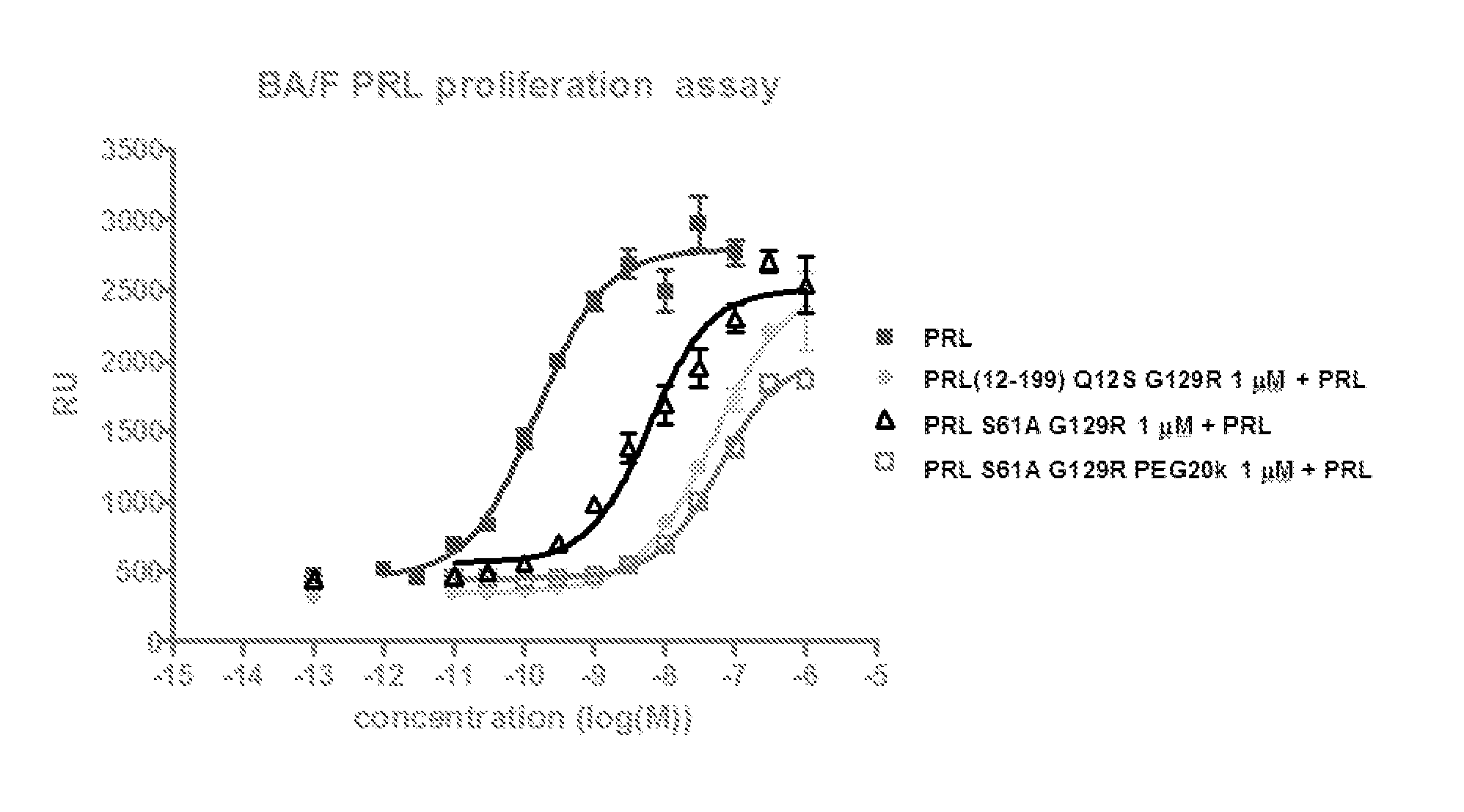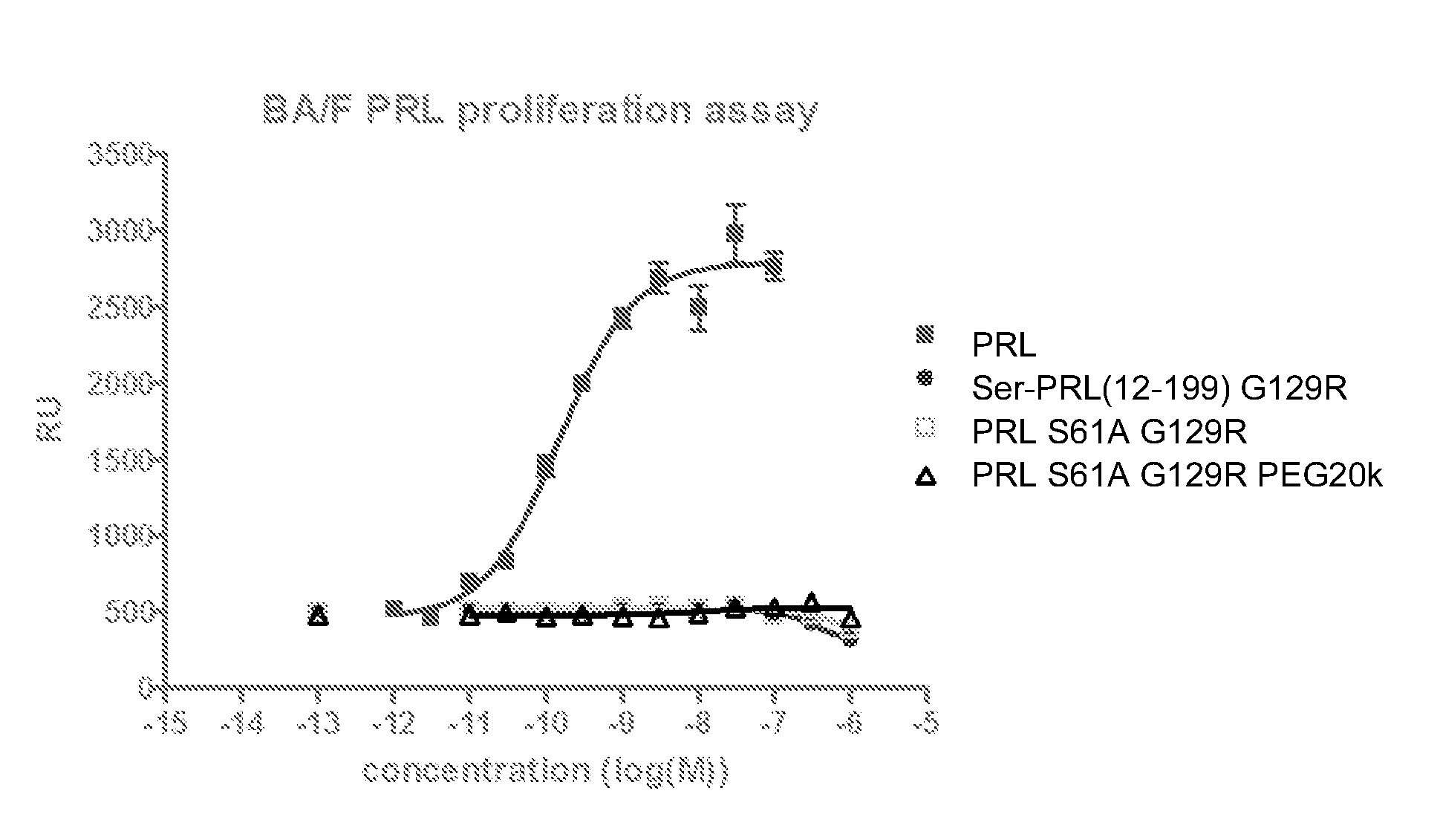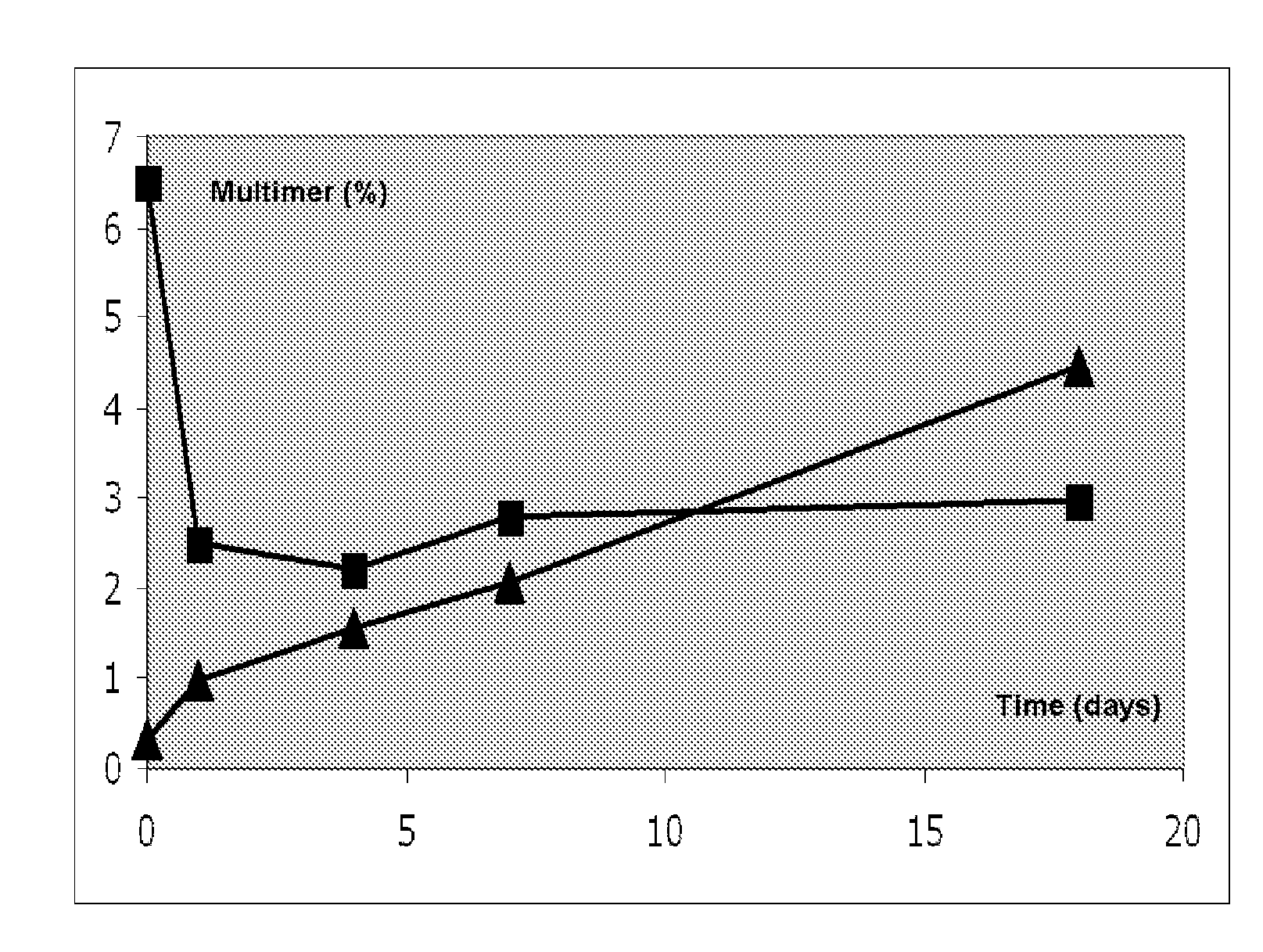N-Terminal Pegylated Prolactin Receptor Molecules
- Summary
- Abstract
- Description
- Claims
- Application Information
AI Technical Summary
Problems solved by technology
Method used
Image
Examples
example 1
General Method (A): Serine Oxidation-Oximation Strategy
[0177]A compound 1, which bears a serine residue at its N-terminus, and wherein PRL-A is a radical of a prolactin molecule formally obtained by removal of the N-terminal amino-group, may be prepared biotechnologically by methods known to a person skilled in the art, e.g. in E-coli.
[0178]The serine may be oxidized selectively by sodium periodate in an appropriate buffer such as e.g. triethanolamine, furnishing a N-terminal aldehyde. The excess periodate reagent may be quenched with e.g. methionine or 2-hydroxyethyl methyl sulphide.
[0179]The buffer of solution containing the protein may be changed to a pH of from 2 to 12, such as from 2 to 7, from 3 to 6, from 3.5 to 5.5, from 4 to 5, from 8 to 12, from 9 to 11, or 10. A PEG-reagent 2, containing an O-substituted hydroxylamine may be added, in which RPEG is any PEG-containing radical. The mixture may be left at a appropriate temperature such as e.g. room temperature, 30° C., or 35...
example 2
Nalpha,13((4-(2-Methyl-4-(10 kDa mPEGyloxy)butanoylamino)butoxy)imino)-acetyl G129R-PRL(13-199) (E2)
Step 1: N-(4-(tert-Butoxycarbonylaminoxy)butyl)-2-methyl-4-(10 kDa mPEGyloxy)butanoic amide
[0182]
[0183]N-(4-Aminobutoxy)carbamic acid tert-butyl ester (204 mg, 1 mmol) was dissolved in dichloromethane (10 ml). The commercially available N-hydroxysuccinimide ester of 2-methyl-4-(10 kDa mPEGyloxy)butanoic acid (1 g, 0.1 mmol) was added. The reaction mixture was stirred for 16 h at room temperature. Ether (90 ml) was added. The formed precipitation was isolated by filtration and dissolved in dichloromethane (10 ml). Ether (90 ml) was added. The formed precipitation was isolated by filtration and dissolved in dichloromethane (6 ml). Ion-exchange material Amberlyst 15 (2 g), which had been washed with dichloromethane (20 ml) and a 10% solution of ethanol in dichloromethane (20 ml), was added. The mixture was gently stirred for 30 min at room temperature. The Amberlyst was filtered off and ...
example 3
Nalpha,13((4-(4-(20 kDa mPEGyloxy)butanoylamino)butoxy)imino)acetyl G129R-PRL(13-199) (E3)
Step 1: N-(4-(4-(mPEG20000yloxy)butanoylamino)butoxy)carbamic acid tert-butyl ester
[0187]
[0188]The commercially available N-hydroxysuccinimide ester of mPEG2000yloxybutanoic acid (Nektar “mPEG-SBA”, #2M450P01, 3 g, 0.15 mmol) was dissolved in dichloromethane (25 ml). N-(4-Aminobutoxy)carbamic acid tert-butyl ester (0.12 g, 0.59 mmol) was added. The reaction mixture was shaken at room temperature. Diethyl ether was added until a precipitation was obtained. The precipitation was isolated by filtration. The material was dried in vacuo to yield 2.39 g of N-(4-(4-(mPEG20000yloxy)butanoylamino)butoxy)carbamic acid tert-butyl ester.
Step 2: N-(4-Aminoxybutyl)-4-(mPEG20000yloxy)butanoylamide
[0189]
[0190]Trifluoroacetic acid (20 ml) was added to a solution of N-(4-(4-(mPEG20000yloxy)butanoylamino)butoxy)carbamic acid tert-butyl ester (2.39 g, 0.12 mmol; may be prepared as described in Example 3, Step 1), ...
PUM
| Property | Measurement | Unit |
|---|---|---|
| Volume | aaaaa | aaaaa |
| Volume | aaaaa | aaaaa |
| Fraction | aaaaa | aaaaa |
Abstract
Description
Claims
Application Information
 Login to View More
Login to View More - R&D Engineer
- R&D Manager
- IP Professional
- Industry Leading Data Capabilities
- Powerful AI technology
- Patent DNA Extraction
Browse by: Latest US Patents, China's latest patents, Technical Efficacy Thesaurus, Application Domain, Technology Topic, Popular Technical Reports.
© 2024 PatSnap. All rights reserved.Legal|Privacy policy|Modern Slavery Act Transparency Statement|Sitemap|About US| Contact US: help@patsnap.com










